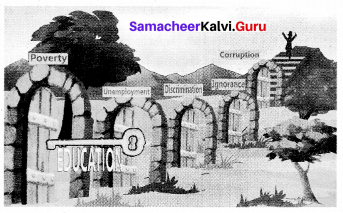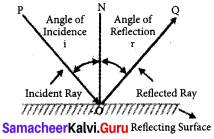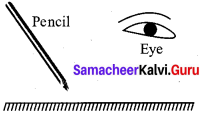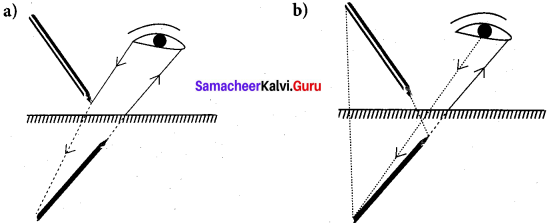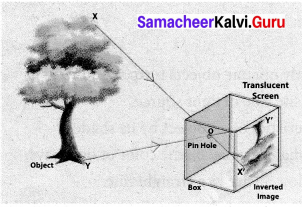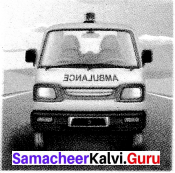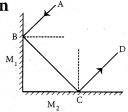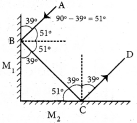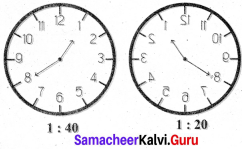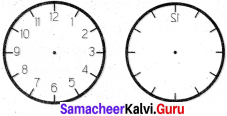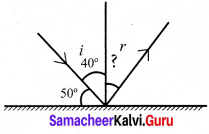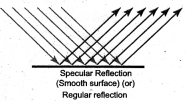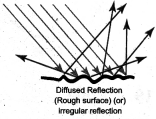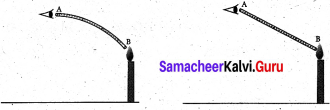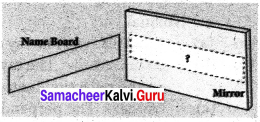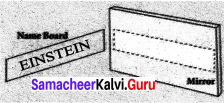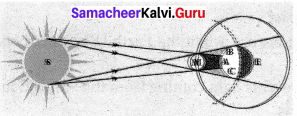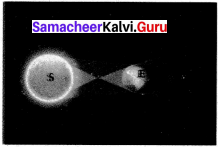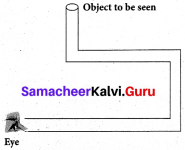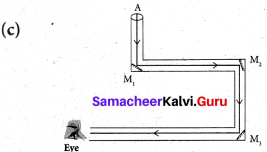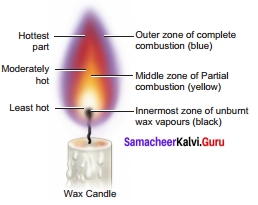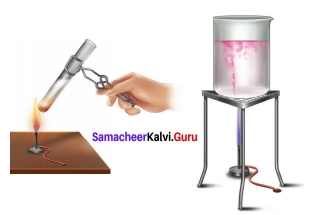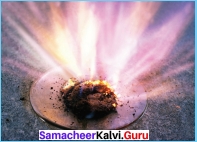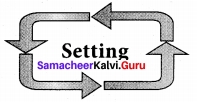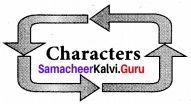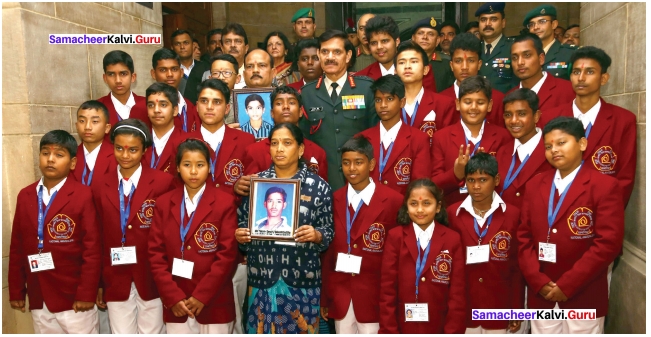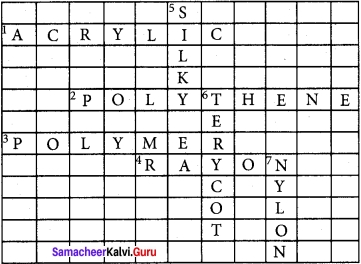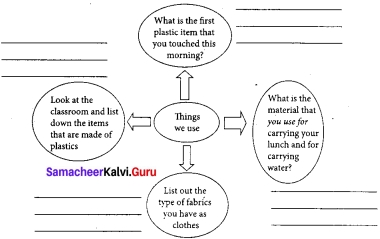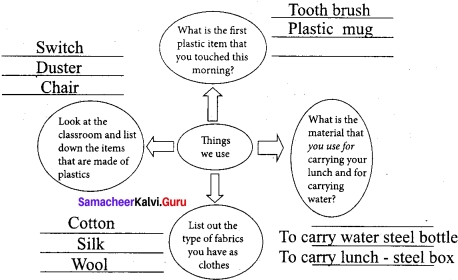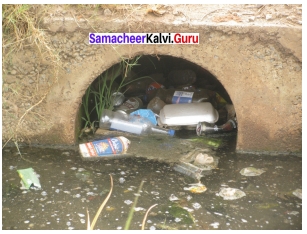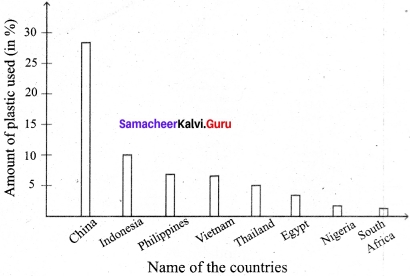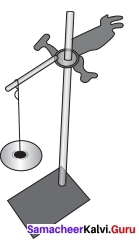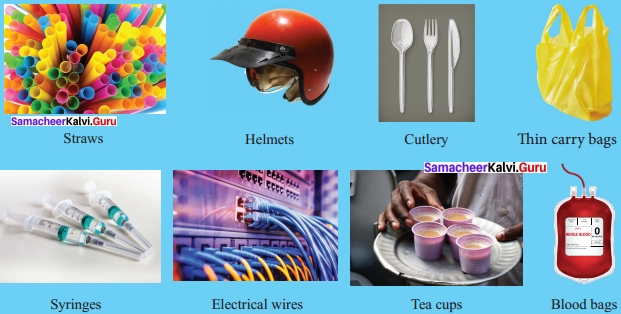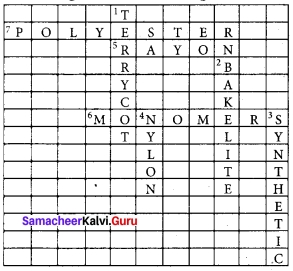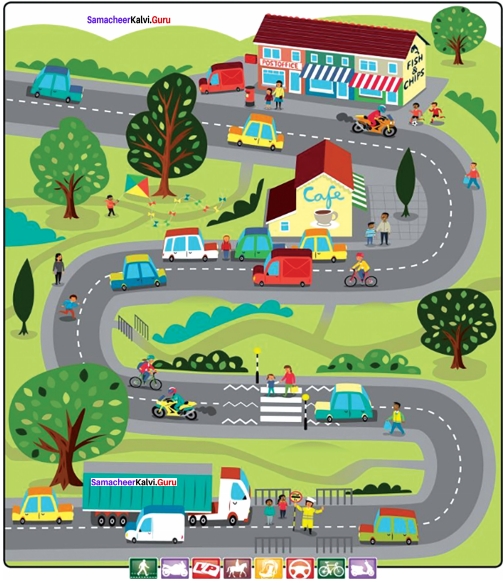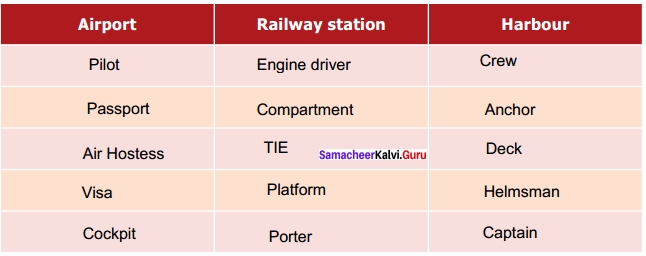Students can Download English Lesson 2 A Story of Self Sacrifice and Bravery Questions and Answers, Summary, Notes Pdf, Activity, Samacheer Kalvi 7th English Book Solutions Guide Pdf helps you to revise the complete Tamilnadu State Board New Syllabus and score more marks in your examinations.
Tamilnadu Samacheer Kalvi 7th English Solutions Term 3 Prose Chapter 2 A Story of Self Sacrifice and Bravery
Read And Understand
A. Fill in the blanks.
- The terrorists asked Neerja to collect the passports of the passengers because ___________
- Neerja passed on the warning in a code to the pilots because she ___________
- Neerja leapt into action when she ___________
- Neerja had a sour marriage due to ___________
- Neerja was sent to London based on ___________
Answer:
- they could identify the Americans on board
- wanted to alert them
- noticed there was chaos on board
- pressurizing dowry demands
- her performance and peer review
B. Think and Write
Question 1.
“I will die; but not run away.” – Justify the saying of Neerja.
Answer:
The family of Neerja were discussing about the sensitive situation of an imaginary hijack. Then Neerja said these words, ‘I will die, but not run away’. She was determined not to be a coward. She lived up to her word.

Question 2.
Why did the three governments of – India, America and Pakistan – honour Neerja?
Answer:
India, America and Pakistan acknowledged her act of bravery. She had saved so many passengers, risking her life. So she was honoured by these governments.
Question 3.
How can we abolish terrorism?
Answer:
We can abolish terrorism by the following ways :
(a) Stop supporting the Dictators who found terrorism.
(b) Stop Arming terrorists.
(c) Stop Imperial Conquests for Arab oil.
(d) Stop torture.
(e) Tackle corruption and money laundering.
C. Read the “Story of Self Sacrifice and Bravery” once again and complete the flow chart.
Answer:
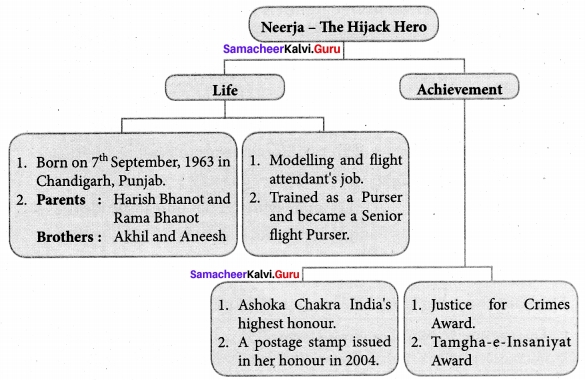
D. Write a summary based on the flow chart.
Answer:
Neerja Bhanot was born on 7th September, 1963 in Chandigarh, Punjab, India. Her parents were Harish Bhanot and Rama Bhanot. Her father was a Mumbai based journalist. She had two brothers named Akhil and Aneesh. She started her career in modelling. She then applied for a flight attendant’s job with ‘Pan Am’. She sent to London to be trained as a Purser. Soon she became a senior flight purser. She was awarded the Ashoka Chakra award from the Indian government. A postage stamp was also issued in her honour in 2004. She was also awarded the Justice for Crimes Award and the Tamgha-e-Insaniyat Award from American and Pakistan government.
Vocabulary
E. Fill in the blanks with appropriate airline vocabulary given in the box.
(cockpit ,touch down ,call light,gate,turbulence, bumpy ,take off ,landing ,boarding pass ,runway)
- You must present the __________ at the gate.
- It might be a __________ ride because we are flying through a storm.
- If you need anything just press the __________
- The captain and the co-pilot sit in the __________
- __________ 3B is down this hall and to your right.
- We will be __________ in Chennai in approximately ten minutes.
- The plane almost missed the __________ because it was such a bad storm.
- We are next in line to __________ on this run way.
- That was a very smooth __________
- This __________ should only last a few minutes.
Answer:
- boarding pass
- bumpy
- call light
- cockpit
- Gate
- landing
- run way
- take off
- touch down
- turbulence
Phrasal Verb
F. Match the phrasal verbs in column A with their meaning in Column B
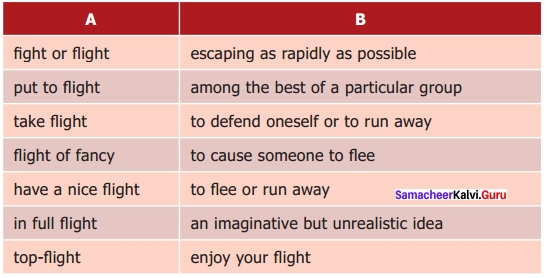
Answer:
- c
- d
- e
- f
- g
- a
- b
G. Find out the anagrams. Use each pair of phrases as clues.
(An anagram is a word or phrase formed by rearranging the letters of a different word or phrase, typically using all the original letters exactly once. Eg. Seat – east, alert – alter)
1. The past tense of leap ______
Something to serve food on _____
Answer:
Leapt
Plate

2. A place to grow flowers _____
Something to be careful of _____
Answer:
garden
danger
3. Another word for under _____
A part of your arm _____
Answer:
below
elbow
4. Try to hear _____
Another word for quiet _____
Answer:
Listen
silent
5. Another word for gift _____
A large snake or a dragon _____
Answer:
present
serpent
6. Minutes and hours _____
A thing on a list _____
Answer:
time
item
7. An organ that pumps blood _____
The planet we live on _____
Answer:
heart
earth

8. Something used to water plants _____
A thing you put on your foot _____
Answer:
hose
shoe
Listening
H. Listen to the announcements and answer the questions.
Announcement 1
Question 1.
What is the number of the flight?
Answer:
The number of the light is 89 B.
Question 2.
What are the things to be kept ready?
Answer:
Boarding Pass and Identification are the things to be kept ready.
Question 3.
When will the regular boarding begin?
Answer:
The regular boarding will begin in approximately ten minutes.
Announcement 2
Question 1.
For whom is the final boarding call?
Answer:
The final boarding call is for passengers Alex and Ruskin Collins.

Question 2.
Where should the passengers proceed?
Answer:
The passengers should proceed to gate 3 immediately.
Question 3.
Where is the flight to?
Answer:
The flight is to New Delhi.
Announcement 3
Question 1.
When will the flight be in the air?
Answer:
The flight is expected to be in the air in approximately seven minutes.
Question 2.
What are things that should be turned off?
Answer:
All personal electronic devices including laptops and cell phones should be turned off.
Question 3.
What is prohibited during the flight?
Answer:
Smoking is prohibited during the flight.
Speaking
I. Read the story board and take roles as pilot and flight attendants to enact the scene. Inflight Passenger Announcements.
Answer:
Flight Attendant 1 : Ladies and Gentlemen, this is Indian Airline flight 999 bound for New York. This is a reminder that all carry-on baggage must fit securely either in the overhead compartments or under the seat in front of you.
Flight Attendant 2 : The captain of this flight is Ms. Fatima. And I am Sylvia, the in-flight time to the destination will be eleven hours and 14 minutes. Our captain will provide you with more information after take-off.
Flight Attendant 1 : Before our departure, please make sure that your seats are in the upright position and tray tables are stowed. Also, please be aware that this is a non-smoking cabin and smoking in the . lavatory or any part of the cabin is strictly prohibited.
Flight Attendant 2 : Cell phones and other electronic devices should be switched off while landing and take-off. We advise you to remain seated and fasten your seat belt at all times during our flight. On behalf of Indian Airline, we welcome you on board and wish you a pleasant journey. Please feel free to ask any attendant for assistance. Thank you!
Pilot : Hello everyone, this is the captain speaking, and I want to welcome you to Flight 18 bound for New York. Our flight time today is llhours and 14 minutes, and we will be flying at an average altitude of 29,000 feet. The local time at New .York is a quarter to twelve (11:45), and the current weather is sunny, but there is a chance of rain later in the day. We will be arriving at Gate 13.
Flight Attendant 1 : On behalf of Indian Airlines and the crew, I want to wish you an enjoyable stay in the Seattle area or at your final destination. Now, please sit back and enjoy the flight. Thank you.
J. Imagine that you are going to interview one of the survivors of the Pan Am Hijack. Discuss with your partner and write down the conversation. Then one of you play the role of the interviewer and other the survivor. You can use the sample questions given below.
- Do you have any information regarding the suspects of the hijack?
- Which countries did the hijackers belong?
- What are the details of the hijacked flight?
- How many passengers were aboard?
- What happened in the last few minutes of the hijack drama?
- Do you have information regarding the victims?
- Was there any recorded communication to/from the plane during the hijacking?
- How many terrorists were there?
- How did you feel when you were in the flight?
- Can you recall Neerja’s role in safeguarding the passengers?
Answer:
Interviewer : Good Morning Sir. This is Manoj Tiwari from the ’Hindu’. I would like to interview you, as you are one of the survivors of the ’Pan Am Hijack’.
Survivor : Yes, it’s true. I should thank the Almighty God and Neerja for saving our lives.
Interviewer : Yes, she had done a brave act, risking her life. Do you have any information regarding the suspects of the hijack?
Survivor : No, I don’t have any information about them. But they do belong to Palestinian Organisation backed by Libya.
Interviewer : How many passengers were on board?
Survivor : There were around 360 passengers and 13 crew members.
Interviewer : How many terrorists were there?
Survivor : There were four Armed Terrorists.
Interviewer : Was there any recorded communication to / from the plane during the hijacking?
Survivor : I don’t remember anything like that happened.
Interviewer : How did you feel when you were in the flight?
Survivor : We were all holding our breaths and terrified.
Interviewer : Can you recall Neerja’s role in safeguarding the passengers?
Survivor : She shed all her hesitations and fears and worked her way around evacuating as many passengers as she could. She waited selflessly in the face of death to help the ones around her. Such a great soul she is!
K. Read the story hoard and take roles as pilot and flight: attendants to enact the scene.
Answer:
Flight Attendant 1 : Ladies and Gentlemen, this is Indian Airline flight 999 bound for New York. This is a reminder that all carry-on baggage must fit securely either in the overhead compartments or under the seat in front of you.
Flight Attendant 2 : The captain of this flight is Ms. Fatima. And I am Sylvia, the in-flight time to the destination will be eleven hours and 14 minutes. Our captain will provide you with more information after take-off.
Flight Attendant 1 : Before our departure, please make sure that your seats are in the upright position and tray tables are stowed. Also, please be aware that this is a non-smoking cabin and smoking in the . lavatory or any part of the cabin is strictly prohibited.
Flight Attendant 2 : Cell phones and other electronic devices should be switched off while landing and take-off. We advise you to remain seated and fasten your seat belt at all times during our flight. On behalf of Indian Airline, we welcome you on board and wish you a pleasant journey. Please feel free to ask any attendant for assistance. Thank you!
Pilot : Hello everyone, this is the captain speaking, and I want to welcome you to Flight 18 bound for New York. Our flight time today is llhours and 14 minutes, and we will be flying at an average altitude of 29,000 feet. The local time at New .York is a quarter to twelve (11:45), and the current weather is sunny, but there is a chance of rain later in the day. We will be arriving at Gate 13.
Flight Attendant 1 : On behalf of Indian Airlines and the crew, I want to wish you an enjoyable stay in the Seattle area or at your final destination. Now, please sit back and enjoy the flight. Thank you.
Grammar
Direct And Indirect Speech
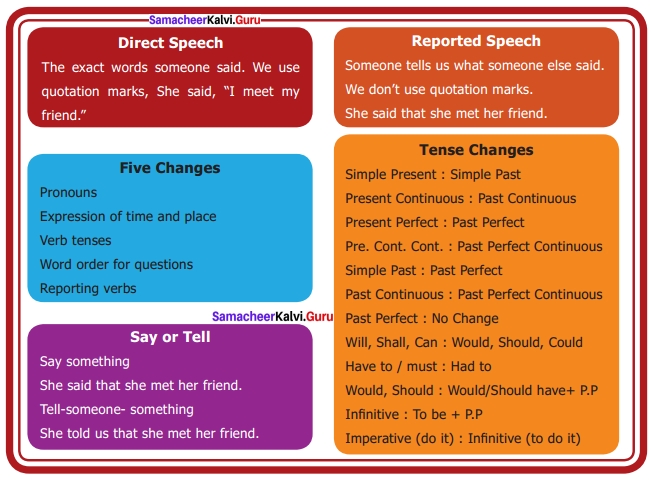
L. Discuss with your partner and punctuate the following.
Question 1.
the woman said to the student please help me cross the street
Answer:
The woman said to the students, “please help me cross the street,”

Question 2.
sarathy said oh how thrilling it was
Answer:
Sarathy said, “Oh, how thrilling it was!”
Question 3.
the teacher said to the students where do you want to go
Answer:
The teacher said to the students, “Where do you want to go ?”
Question 4.
i am tired mohana said to her aunt
Answer:
I am Ham tired, “Mohana said to her aunt.
Question 5.
shankar said to his teacher madam i had prepared my project assignment but i forgot to bring it
Answer:
Shankar said to his teacher, “Madam, I had prepared my project assignment, but I forgot to bring it.”
M. Complete the sentences in reported speech.
Example : I admire you. She said that she admired me.
- “It is too late.” I said that it ______ too late.
- I met you yesterday.” Sam told me that he had met me ______
- “I cannot come.” Mala said that ______
- “I will pay tomorrow.” He said that he would pay ______
- “The Himalayas are the highest mountain ranges.” He knew that the Himalayas ______ the highest mountain ranges.
- “I may lend you some money” Balu promised ______ some money
- “I have been watching a film.” He said that ______ a film.
- “I have not done it today.” I explained that I had not done it ______
- “I was with him last week.” Jimmy told that ______ with him the previous week.
- “I will finish this picture tomorrow.” Jothi said that ______ picture the next day.
Answer:
- was
- the previous day
- she couldn’t come
- the next day
- are
- to lend him
- he had been watching
- that day
- he was
- he would finish that
N. Read the following dialogue and report it.
Betty : What are you doing here, Kitty? I haven’t seen you since June.
Kitty : I’ve just come back from my holiday in Darjeeling.
Betty : Did you enjoy it?
Kitty : I love Darjeeling. The landscape is amazing.
Betty : Did you go to the Lloyd’s Botanical Garden?
Kitty : Yes. It was my first trip. I can show you some pictures. Are you doing any thing tomorrow?
Betty : I must arrange a couple of things. But I am free tonight.
Kitty : You might come to my place. What time shall we meet?
Betty : I’ll be there at eight. Is it all right?
Answer:
Betty asked Kitty what she was doing there And she added that she hadn’t seen her since June. Kitty explained that she had just come back from her holiday in Darjeeling. Betty asked if she had enjoyed it. Kitty told her that she loved Darjeeling and that the landscape was amazing Betty wanted to know if she had gone to the Lloyd’s Botanical Garden. Kitty said that it had been her first trip and that she could show her some pictures. And then she asked her if she was doing anything the next day. Betty explained that she had to arrange a couple of things. But she added that she was free that night. Kitty suggested that she might come to her place and asked her at what time they should meet Betty said she would be there at eight. And finally, she asked whether it was all right.
Writting
O. Read the story of Neerja Bhanot. Make notes based on the table and complete it.
Answer:
| Name |
Neerja Bhanot |
| Father’s Name & Occupation |
Harish Bhanot – Mumbai-based Journalist |
| Mother’s Name & Occupation |
Rama Bhanot |
| Born on |
7th September, 1963 |
| Nationality |
Indian |
| State |
Punjab |
| City |
Chandigarh |
| Education |
School :
1. Sacred Heart School, Chandigarh.
2. Bombay Scottish School, Mumbai |
| Higher Education |
College: St, Xavier’s College, Mumbai. |
| Career |
Modelling, Flight Attendant’s job |
| Personal Life |
Marriage,Flight attendant’s job |
| Siblings |
Two brothers Akhil and Aneesh |
| Achievements |
1. Senior Flight Purse at 22 Years
2. The youngest civilian to be awarded the AshokChakra, the highest honour for bravery |
| Awards |
Ashok Chakra (1987), Justice for Crimes Award (2005) and TamghaeInsaniyat Award (1987). |
| Legacy |
Insurance Money and Funds from ‘Pan Am’ |
| Died on |
September 5,1986 |
| Place of Death |
Karachi Airport |
Creative Writing
P. “Heroes are ordinary people who do extraordinary things.” Write an anecdote on the extraordinary deed of Jaiswal K.P. who helped in the recent Kerala Flood.Use the tips given in the box.
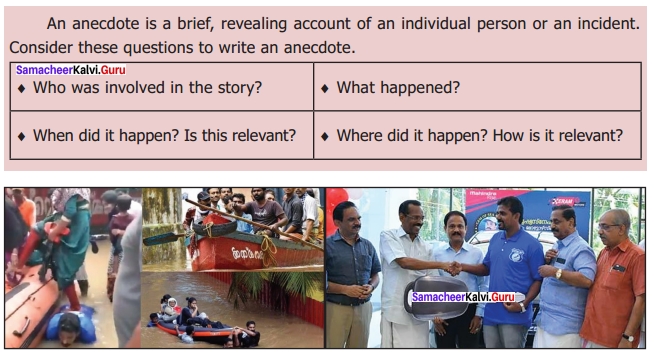
Answer:
Activity to be done by the students
A Story of Self Sacrifice and Bravery Additional Question
I. Choose the correct Synonyms from the option given below
Question 1.
assaulted
(a) hit
(b) attacked violently
(c) cut
(d) scolded
Answer:
(b) attacked violently

Question 2.
disaster
(a) misfortune
(b) luck
(c) merit
(d) happiness
Answer:
(a) misfortune
Question 3.
achievement
(a) failure
(b) disappointment
(c) approval
(d) success
Answer:
(d) success
Question 4.
injustice
(a) fairness
(b) unfairness
(c) equality
(d) delight
Answer:
(b) unfairness

Question 5.
distress
(a) happiness
(b) joy
(c) merriness
(d) sorrow
Answer:
(d) sorrow
Question 6.
chaos
(a) order
(b) discipline
(c) confusion
(d) law Ml
Answer:
(c) confusion
Question 7.
citation
(a) quotation
(b)thought
(c) morality
(d) scandal
Answer:
(a) quotation

Question 8.
fatal
(a) harmless
(b) beneficial
(c) death
(d) devoted
Answer:
(c) death
Question 9.
succumbed
(a) surrendered
(b) won
(c) defeated
(d) battled
Answer:
(a) surrendered
Question 10.
mandate
(a) announcement
(b) an official order
(c) assessment
(d) truth
Answer:
(b) an official order
II. Choose the correct Antonyms from the Options given below.
Question 1.
confronted
(a) challenged
(b) opposed
(c) tackled
(d) avoided
Answer:
(d) avoided
Question 2.
calamity
(a) blessed
(b) damage
(c) distress
(d) disaster
Answer:
(a) blessed

Question 3.
foremost
(a) prominent
(b) outstanding
(c) hindmost
(d) topmost
Answer:
(c) hindmost
Question 4.
attempted
(a) struggled
(b) offered
(c) prevented
(d) gambled
Answer:
(c) prevented
Question 6.
helplessness
(a) helpfulness
(b) power full
(c) inability
(d) emotionless
Answer:
(a) helpfulness
Question 7.
senselessness
(a) meaningless
(b) foolish
(c) sensible
(d) stupid
Answer:
(c) sensible

Question 8.
rescued
(a) imprisoned
(b) saved
(c) liberated
(d) freed
Answer:
(a) imprisoned
Question 9.
similar
(a) resembled
(b) different
(c) identify
(d) same
Answer:
(b) different
Question 10.
includes
(a) comprises
(b) contains
(c) excludes
(d) covers
Answer:
(c) excludes
III. Choose the Correct Answer (MCQ).
Question 1.
The passengers on the ________ hailed from different countries.
(a) plane
(b) train
(c) bus
(d) vehicle
Answer:
(a) plane
Question 2.
The terrorists were more intent on targetting the ________
(a) Indians
(b) Pakistanis
(c) Americans
(d) Arabs
Answer:
(c) Americans
Question 3.
The hijackers wanted to fly to Israel and crash the plane against a ________
(a) 40 storey building
(b) building
(c) harbour
(d) flight
Answer:
(b) building
Question 4.
The ________ on the aircraft continued for long.
(a) chaos
(b) confusion
(c) nightmare
(d) terror
Answer:
(c) nightmare
Question 5.
The marriage proved to be a ________
(a) failure
(b) unsuccessful
(c) successful
(d) disaster
Answer:
(d) disaster
Question 6.
Only 80 of the ________ applicants were picked.
(a) 10,000
(b) 600
(c) 10,000
(d) 2,000
Answer:
(a) 10,000
Question 7.
She was sent to Miami to be trained for ________ weeks.
(a) 5 to 7
(b) 8 to 10
(c) 6to8
(d) 2to3
Answer:
(c) 6to8
Question 8.
A postage stamp was also issued in her honour in ________
(a) 2002
(b) 2004
(c)2001
(d)2003
Answer:
(b) 2004
Question 9.
The trust presents two awards ________
(a) e very week
(b) every month
(c) every year
(d) every two years
Answer:
(c) every year

Question 10.
Some people ________ even after death.
(a) glitter
(b) live
(c) lighten
(d) shine
Answer:
(d) shine
IV. Very Short Questions with Answers.
Question 1.
What was the name of the hijacked plane?
Answer:
The name of the hijacked plane was ’Pan Am’.
Question 2.
Where was the flight hijacked? .
Answer:
The flight was hijacked at Karachi Airport.
Question 3.
What was Neerja?
Answer:
Neerja was a senior flight Purser.
Question 4.
When was Neerja married?
Answer:
Neerja was married in March 1985.
Question 5.
When did she leave her husband?
Answer:
She left her husband at the age of 22 years.
Question 6.
Name an advertisement, she appeared while modelling?
Answer:
Binaca toothpaste was the advertisement, she appeared, while modelling.

Question 7.
Why was she sent to Miami?
Answer:
She was sent to Miami to be trained for 6 to 8 weeks.
Question 8.
When was the postage stamp issued in her honour?
Answer:
A postage stamp was issued in her honour in 2004.
Question 9.
Who went to Washington D.C. to receive the award?
Answer:
Her brother went to Washington D.C. to receive the award.
Question 10.
Who set up the Neerja Bhanot Pan Am Trust?
Answer:
Her parents set up the Trust.
V. Short Questions with Answers.
Question 1.
Who were the terrorists targetting? What did they do?
Answer:
The terrorists were more intent in targetting the Americans, So they told Neerja to collect all the passports of the passengers.
Question 2.
How many Americans were saved with her help?
Answer:
She saved at least 39 Americans out of 41 passengers with her immediate action.
Question 3.
Why were the terrorists at a loss of pilots?
Answer:
As per the mandate, the pilots made an escape through the alternate exit. So the terrorists were at a loss of pilots.
Question 4.
Why did Neerja leave her husband?
Answer:
She left her husband because of the dowry demands.
Question 5.
What was named after her in Mumbai and by whom?
Answer:
A square in Mumbai’s Ghatkopar (East) Suburb was named after her by Mumbai Municipal Corporation.
VI. Paragraph Question with Answer.
Question 1.
Narrate the disaster of Neerja’s married life.
Answer:
EUTES Though Neerja’s career had taken off, her family decided to get her married to a man in Sharjah, UAE. She was married in the month of March 1985. This is where her life took a turn for the worse. The marriage proved to be a disaster. After two months, she left her husband at the age of 22. This was due to the pressurizing dowry demands. Neerja refused to surrender to the society because . she was born with the spirit to fight.
A Story of Self Sacrifice and Bravery Grammar Additional
Direct And Indirect Speech
Direct Speech:
- Exact words of the speaker within quotation.
- Verb within quotations is in the present tense forms.
- Punctuations like full stop, question marks and exclamations should occur before the quotation closes.
- ‘Wh’ questions within quotations.
- ‘Yes’ or ‘no’ questions begin with helping verbs like (is, was, are, were, am), will, shall, may, can, have, has, do, does.
- Use of ‘I’, ‘You’ in the direct speech.
Indirect Speech:
- The exact words need not be used to convey the i message.
- Verbs in the present tense must be changed to their corresponding past tense.
- All indirect statements, or questions or exclamations end with a full stop.
- ‘Wh’ words are subordinating conjunctions in the indirect speech.
- All the helping verbs occur in the past tense after the subject.
- Change to ‘he’ / ‘she’ according to the speaker and listener.
I. Complete the sentences in reported speech.
- ‘I will meet you tomorrow’. She said that she ________ me the next day.
- ‘I can do all this work myself. He said that he ________ himself.
- ‘Stop telling lies’. She ordered him ________ telling lies.
- ‘We will come to your house tomorrow’. They said that ________ to her house ________
- ‘My Dad has left just now’.saru told me that Dad ________
Answer:
- would meet
- could do all that
- to stop
- they would come; the next day
- had left just then
II. Punctuate the following,
Question 1.
what a wonderful sight it is said anu
Answer:
“W hat a wonderful sight it is saidA nu

Question 2.
she bought some pens pencils erasers and scale from the stationery shop
Answer:
She bought some pens pencils erasers and scale from the stationery shop
Question 3.
get up it is getting late said her mother
Answer:
“G et up I is getting late” said her mother
Question 4.
dont shout in the classroom keep quiet said the teacher
Answer:
“Don t shout in the classroom keep quiet” said the teacher
Question 5.
what are you doing here asked the watchman
Answer:
“What are you doing here asked the watchman
Warm Up
Many people become engineers, doctors, IAS officers, film stars and so on. But few become ‘‘Human”,
Look at the pictures.
Discuss and answer.
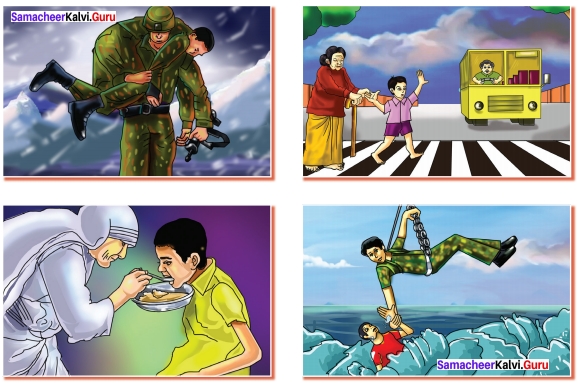
Question 1.
What makes a person a hero?
Answer:
A person becomes a hero, if he risks his / her life for the sake of others.
Question 2.
How do heroes make a difference?
Answer:
A hero is a person of distinguished courage and ability. They are admired for their brave deeds and noble qualities.
Question 3.
Does every hero have to fight or risk their life?
Answer:
No, not every hero has to fight or risk his life. If he values humanity and does his best, he is a hero.
Think and Answer.
Question 1.
Can you think of a situation in which taking a small action would make a big difference?
Answer:
One day, I joined a mission-oriented online group. I raised money for a good cause. I started my own website. I volunteered for it remotely. I donated for a good cause. A small action of mine, made a big difference in my life.

Question 2.
What about everyday heroes, who do small but important acts?
Answer:
Everyday heroes should be appreciated for their valuable acts of brave deeds. They are not admired because their acts are unknown to the public.
Question 3.
Are these people really heroes?
Answer:
Yes, these people are really heroes.
A Story of Self Sacrifice and Bravery Summary
Section – I
Pan Am Flight
The aircraft ‘Pan Am Flight 73’ with 360 passengers on board was hijacked by four heavily armed terrorists. It was ready to depart from Jinnah International Airport in Karachi to United States. It was hijacked, while it was parked at Karachi airport. The passengers were Indians, Germans, Americans, Pakistanis and others. The terrorists were more intent on targetting the Americans. Neerja, a senior flight purser, was asked to collect the passport of the passengers. She managed to hide and throw them down the rubbish chute. The hijackers wanted to fly to Israel and crash the plane against a building. Neerja alerted the pilots in the cockpit of the hijacked plane, so that they could save themselves. When the terrorists knew this, they attacked her violently. Responding to her warning, the pilots escaped through an alternate exit. The terrorists were at a loss of pilots.
The frustration and helplessness of the terrorists grew every hour. They became impatient. After seventeen hours of the hijack, the plane ran out of power. The terrorists were armed with grenades, plastic explosive belts and pistols. They started to fire the passengers and there was confusion on board. Taking advantage of this, Neerja leapt into action. She started saving as many passengers as she could. As she was about to exit herself, she noticed three children in the flight. She rescued the kids. But she was hit by the bullets fired by the terrorists. This heroic young girl passed away, as the wounds were fatal.
Discuss and answer.
Question 1.
How did Neerja save the Americans?
Answer:
Neerja saved the Americans by hiding their passports and throwing them down the rubbish bins.

Question 2.
Why did Neerja alert the pilots?
Answer:
Neerja alerted the pilots to escape through the alternate exits.
Question 3.
What happened when the terrorists lost their patience?
Answer:
When the terrorists lost their patience, Neerja leapt into action. She shed all her hesitation and fears. She worked her way around helping to save as many passengers as she could.
Section – II
Neerja Bhanot – Life
Neerja Bhanot was born on 7th September 1963 in Chandigarh, Punjab. Her parents were Rama Bhanot and Harish Bhanot. Her father was a journalist. She was the third child of the couple. She had two brothers, Akhil and Aneesh. She studied in Sacred Heart School till 6th Standard. After that, they moved to Mumbai. There, she attended Bombay Scottish School. She graduated from St. Xavier’s College. She got married to a man in Sharjah, UAE in March 1985. This marriage proved to be a disaster. After two months, she left her husband due to dowry demands. She refused to surrender to the society, as she was born with a spirit to fight. She started her career in modelling and made appearances in various advertisements like “Binaca toothpaste”.
Neerja applied for a flight attendant’s job with ‘Pan Am’. It was the largest international air carrier in the United States at that time. Neerja was one among the 80 applicants who were selected. She was sent to Miami to get trained for 6 to 8 weeks. Then she was sent to London to be trained as a purser, the senior-most cabin manager. Her duty was handling passenger’s complaints, making required announcements and handling security. She was soon made a senior flight purser with the airways. It was a big career achievement for a young woman of 22.
Discuss and answer.
Question 1.
Name the schools and colleges Neerja studied in.
Answer:
Neerja studied in Sacred Heart School and Bombay Scottish School. She got graduated from St. Xavier’s College.

Question 2.
Why was Neerja sent to London?
Answer:
Neerja was sent to London to train to be a Purser.
Question 3.
What is the duty of a purser?
Answer:
Pursers worked as managers on flights. They handled passenger complaints and security, They also made required announcements.
Section – III
Award, Achievement And Legacy
The Ashok Chakra citation read “Her loyalties to the passengers of the aircraft in distress will forever be a lasting tribute to the finest qualities of the human spirit”. The government of India, Pakistan and America acknowledged her act of bravery. They rewarded her with various awards. Ashok Chakra, which was India’s highest honour for bravery in peacetime was awarded to her. A postage stamp was also issued in her honour in 2004. She was awarded the ‘Justice for Crimes Award’ and ‘Tamgha-e-Insaniyat award’. Her parents set up “the Neerja Bhanot Pan Am Trust” with the insurance money and the funds from ‘Pan Am’. The trust presented two awards every year – one to honour a dedicated flight crew member, worldwide. Another award was presented to an Indian woman who overcomes social injustice and helps other women in social distress. The award includes a sum of INR 1,50,000, a trophy and a citation.
One of the children, who had been saved by Neerja during the hijack, is now a captain of a major airline. Some people, shine even after death. Neerja was one among them. Even the streets of Mumbai remember her. A square in Mumbai’s Ghatkopar (East) suburb was named after her by the Mumbai Corporation.
![]()
![]()
![]()


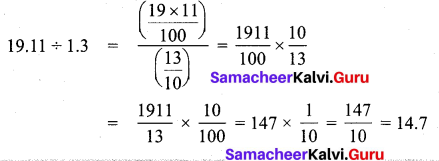
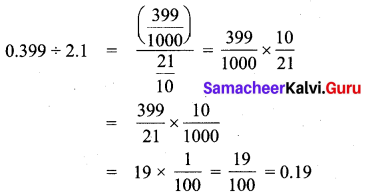
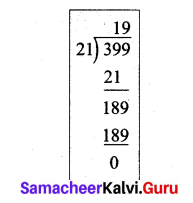
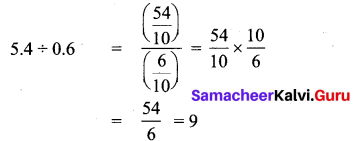
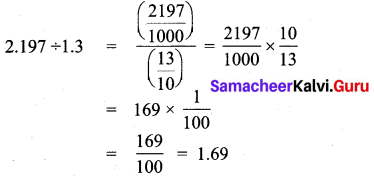
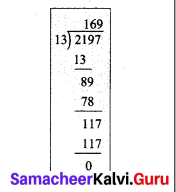
![]()
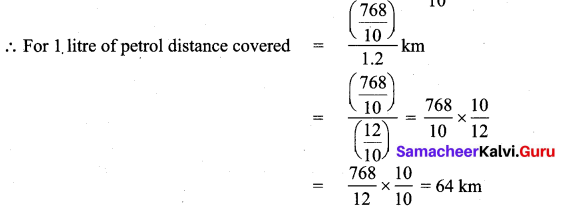
![]()


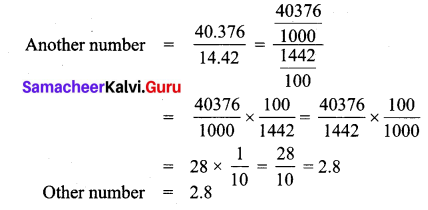
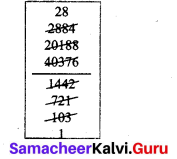
![]()
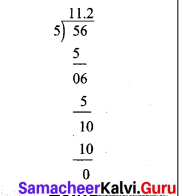
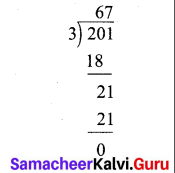
![]()

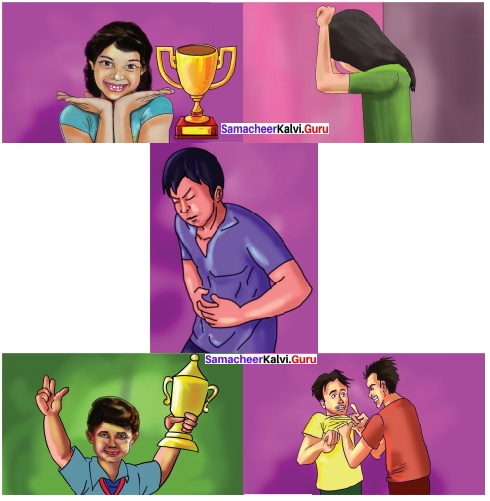
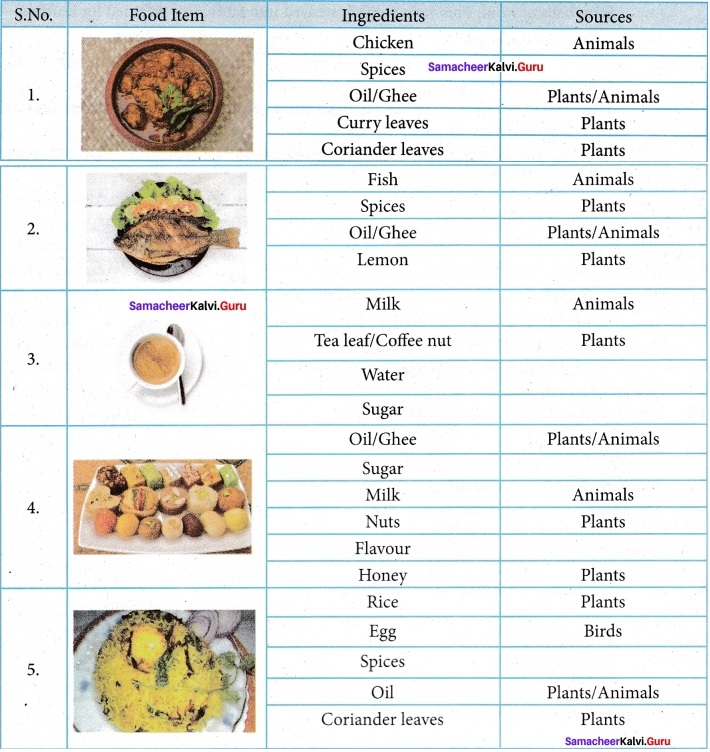
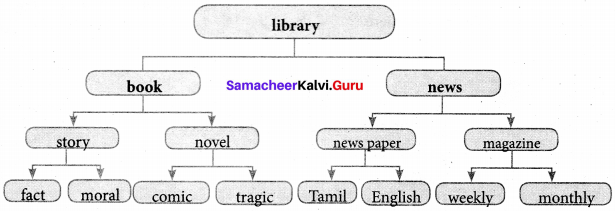
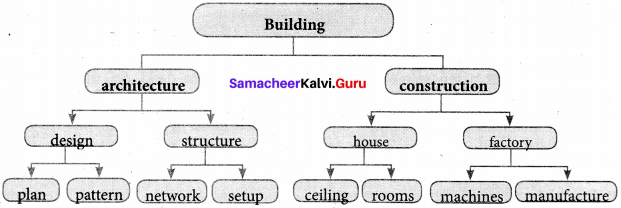

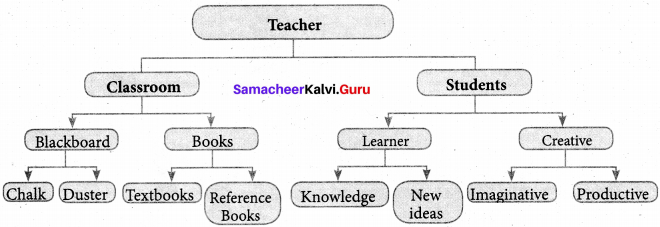
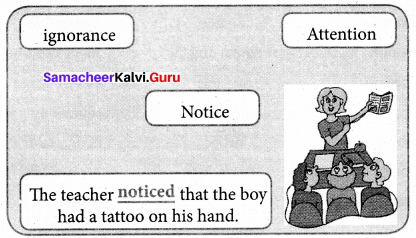
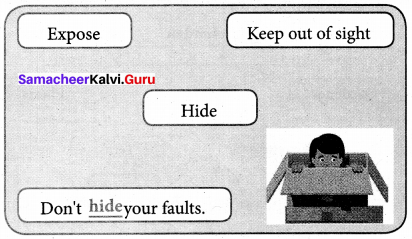
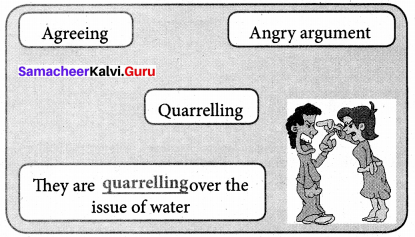
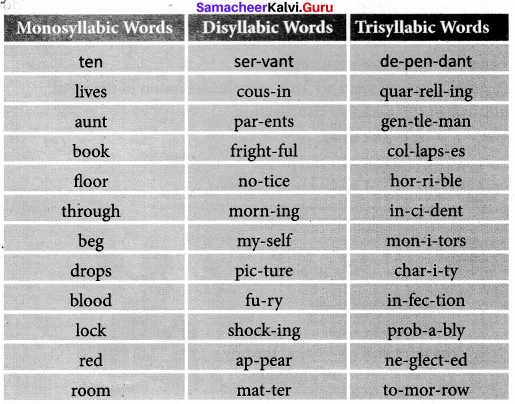
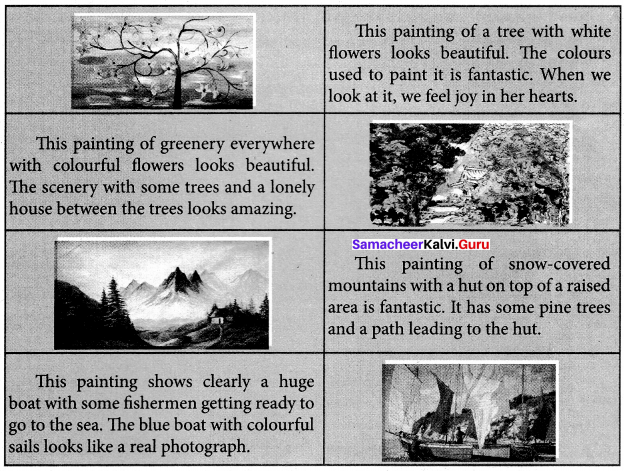
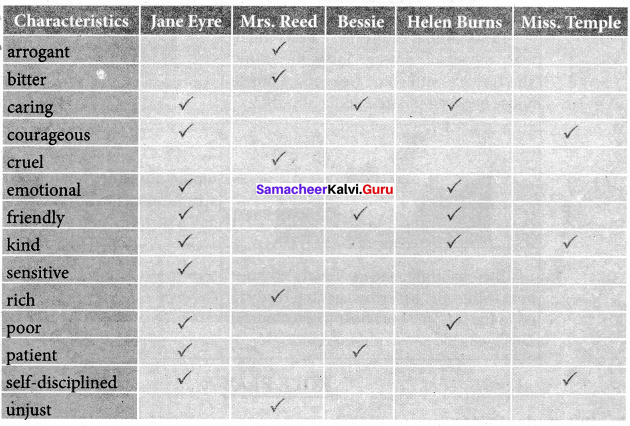
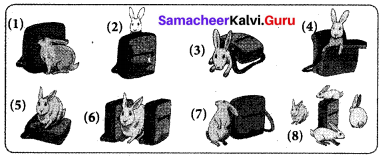
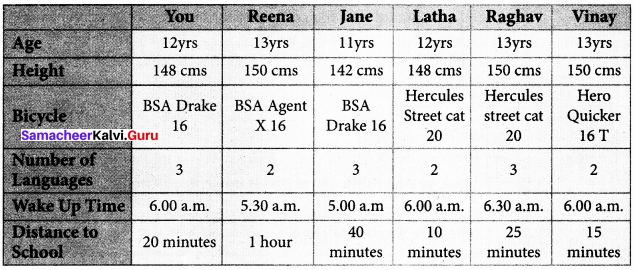
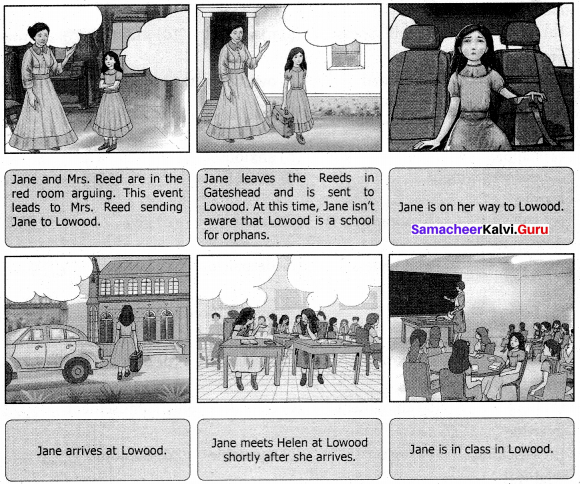 ”
”